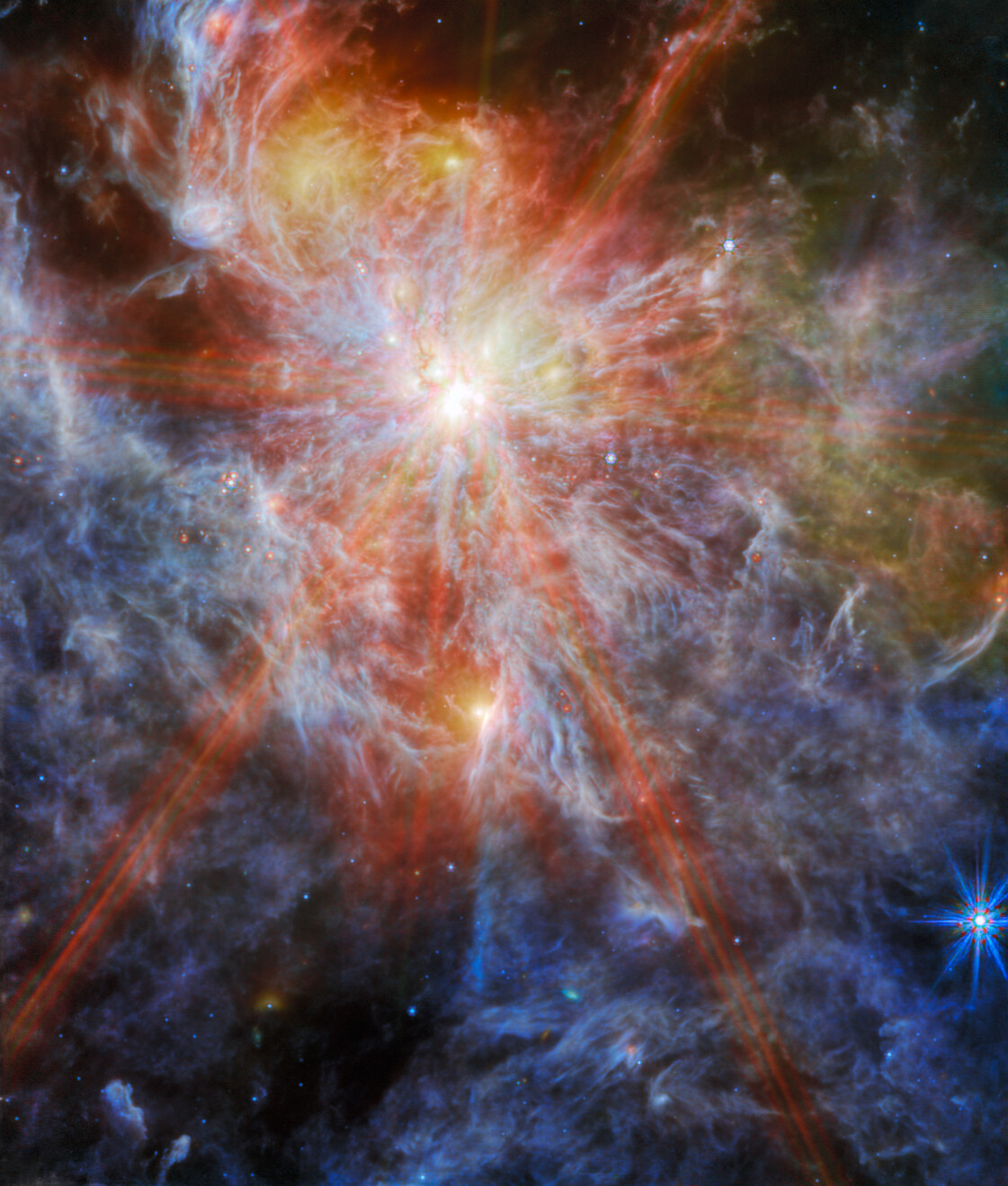The birthplaces of stars have never looked this good. Thanks to the keen infrared eye of JWST, which can see through some of the gas and dust that make up star-forming clouds, humans have gotten new insights into some incredible nebulae – and with beautiful pictures, too.
The latest one is an image of N79 using the space telescope’s Mid-InfraRed Instrument (MIRI). N79 is located in the Large Magellanic Cloud (LMC), one of the largest and closest satellite galaxies to our own, the Milky Way. N79 is about 1,630 light-years across, but this image focuses just on a small portion called N79 south.

The full view of N79 South.
Image Credit: ESA/Webb, NASA & CSA, M. Meixner
The mid-infrared view provided by MIRI allows one to peer deep inside the nebula, highlighting the glowing moving gas which is located deeper inside the cloud. It would be invisible with a telescope that only sees the light that the human eye can see.
And it’s not just shrouded gas and dust – there are also stars and proto-stars within the nebula, including an object bright enough to create the typical diffraction spike pattern.
This pattern appears due to how the secondary mirror is being held in the telescope. The mirror is held by three struts, and as light moves around them, the light gets diffracted. Each strut produces two spikes 90 degrees from each other. That makes six spikes, but if you look at the picture you’ll notice that there are two extra spikes almost at the vertical. There is another feature that creates spikes, and that’s the hexagonal mirrors of the system. This also creates six spikes, but everything is aligned so four spikes overlap in the images, so there are only eight visible.
N79 is similar to another nebula imaged by JWST called the Tarantula Nebula, or 30 Doradus, which is also located in the LMC. Both of these nebulae are producing stars at a rate not seen in our galaxy for billions and billions of years, and N79 is doing so twice as efficiently as 30 Doradus.
Understanding star formation in the LMC gives us insight into the same phenomenon in the distant universe. The LMC is more primitive in composition and more active than the Milky Way, so it’s a good analogous of galaxies from the distant past.
Source Link: JWST Spots New Star-Forming Nebula That Looks Like A Painting Of Heaven